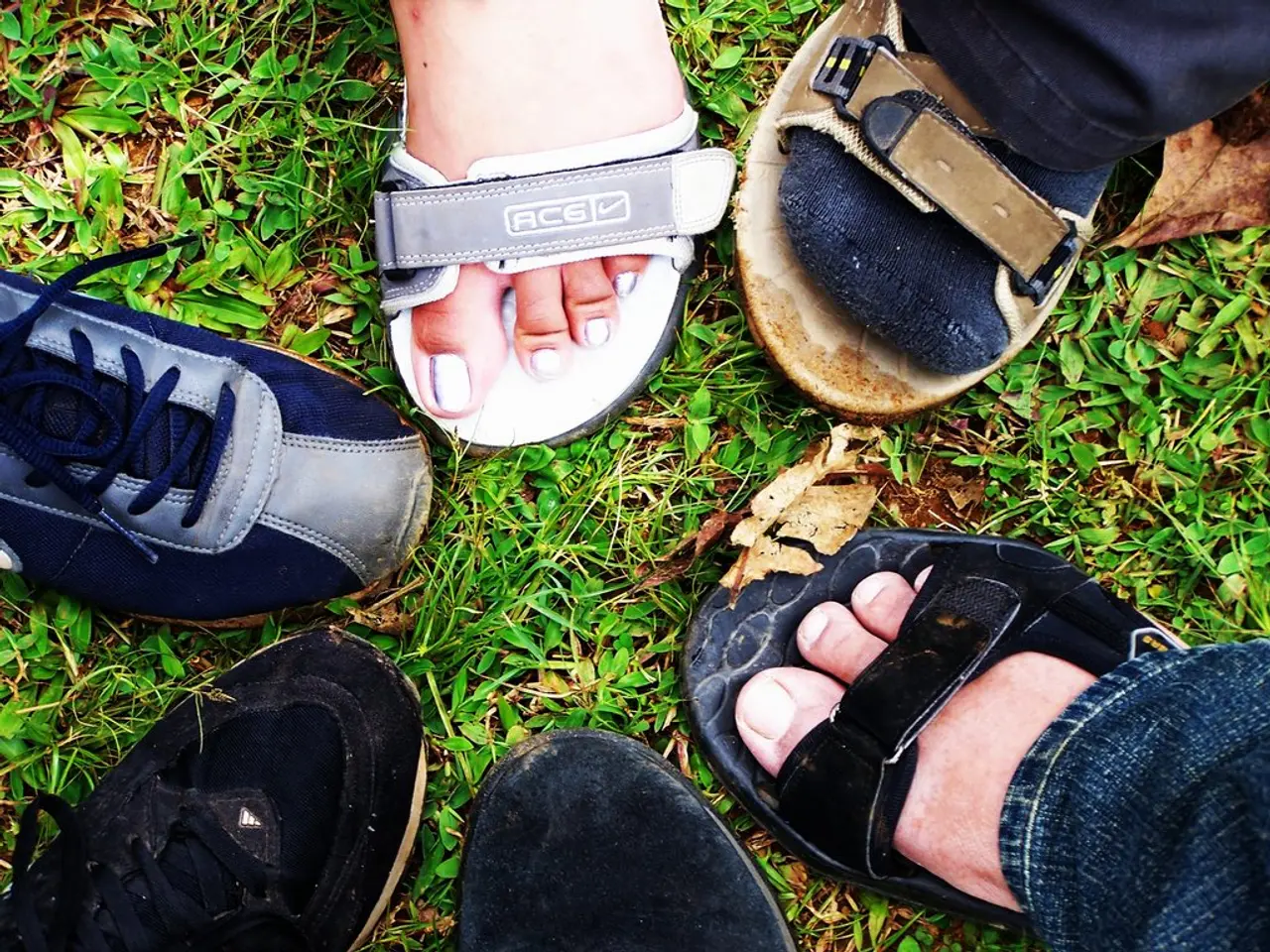Unforeseen benefits and drawbacks of running without shoes
Barefoot training, a fitness trend gaining popularity among athletes and fitness enthusiasts, is designed to mimic the feel of barefoot training while providing some traction and protection. This unique approach to exercise has several benefits, including improving foot-strike interaction, activating muscles often neglected with shoe wear, and enhancing balance, posture, and form.
However, exercising without shoes comes with its own set of risks. On clean, soft surfaces, it can be safe, but on hard or uneven floors, it increases the risk of injuries like cuts or fractures. For this reason, fitness professionals recommend taking certain safety precautions. The exercise area should be checked for sharp objects, hazardous materials, or uneven surfaces that could cause injury. It's also important to listen to your body and stop if you experience pain or discomfort during barefoot workouts. For individuals with underlying conditions such as diabetes or neuropathy, consulting a healthcare professional before starting barefoot routines is advised.
Appropriate surfaces for barefoot training include stable, flat, and cushioned areas such as carpeted floors, exercise mats, or padded gym floors. These surfaces reduce the risk of slips, falls, and impact injuries. Avoiding slippery, hard, or uneven surfaces is crucial to prevent accidents or foot injuries during barefoot exercises.
An alternative to traditional barefoot training is the use of minimalist shoes, which offer some protection and support while maintaining natural foot mobility. These shoes, with thin soles and minimal cushioning, provide a safer alternative for those transitioning from regular footwear.
Fitness professionals emphasize the benefits of barefoot exercises for developing foot strength, balance, and proprioception. Yoga, Pilates, bodyweight exercises, and mobility drills are ideal for barefoot training as they emphasize control, stability, and natural foot movement.
However, it's important to note that people with certain foot conditions or injuries should approach barefoot training with caution. Orthopedic doctors warn that such individuals should consult a healthcare provider before starting any barefoot routines.
In conclusion, prioritizing safety by choosing controlled environments and suitable flooring while attentively monitoring physical responses is key to safe barefoot fitness training. With the right precautions, barefoot training or minimalist footwear can offer a unique and beneficial addition to your fitness routine.
When considering barefoot training for health-and-wellness and fitness-and-exercise, it is essential to prioritize safety by choosing controlled environments and suitable flooring, such as stable, flat, and cushioned areas like carpeted floors, exercise mats, or padded gym floors. This approach will help prevent slips, falls, and impact injuries that could otherwise occur on slippery, hard, or uneven surfaces.
For individuals who prefer a middle ground between traditional barefoot training and shoe wear, minimalist shoes with thin soles and minimal cushioning offer an effective alternative, providing some protection and support while maintaining natural foot mobility. This choice can offer a safer option for those transitioning from regular footwear.




